1.Identification
1.1 GHS Product identifier
| Product name | propan-2-yl propan-2-yloxycarbonyloxy carbonate |
|---|
1.2 Other means of identification
| Product number | - |
|---|---|
| Other names | Bisisopropyl peroxydicarbonate |
1.3 Recommended use of the chemical and restrictions on use
| Identified uses | For industry use only. |
|---|---|
| Uses advised against | no data available |
1.4 Supplier's details
| Company | MOLBASE (Shanghai) Biotechnology Co., Ltd. |
|---|---|
| Address | Floor 4 & 5, Building 12, No. 1001 North Qinzhou Road, Xuhui District, Shanghai, China |
| Telephone | +86(21)64956998 |
| Fax | +86(21)54365166 |
1.5 Emergency phone number
| Emergency phone number | +86-400-6021-666 |
|---|---|
| Service hours | Monday to Friday, 9am-5pm (Standard time zone: UTC/GMT +8 hours). |
2.Hazard identification
2.1 Classification of the substance or mixture
Organic peroxides, Type B
Skin irritation, Category 2
Serious eye damage, Category 1
Hazardous to the aquatic environment, long-term (Chronic) - Category Chronic 2
2.2 GHS label elements, including precautionary statements
| Pictogram(s) |     |
|---|---|
| Signal word | Danger |
| Hazard statement(s) | H241 Heating may cause a fire or explosion H315 Causes skin irritation H318 Causes serious eye damage H411 Toxic to aquatic life with long lasting effects |
| Precautionary statement(s) | |
| Prevention | P210 Keep away from heat, hot surfaces, sparks, open flames and other ignition sources. No smoking. P234 Keep only in original packaging. P235 Keep cool. P240 Ground and bond container and receiving equipment. P280 Wear protective gloves/protective clothing/eye protection/face protection. P264 Wash ... thoroughly after handling. P273 Avoid release to the environment. |
| Response | P370+P380+P375 In case of fire: Evacuate area. Fight fire remotely due to the risk of explosion. P302+P352 IF ON SKIN: Wash with plenty of water/... P321 Specific treatment (see ... on this label). P332+P313 If skin irritation occurs: Get medical advice/attention. P362+P364 Take off contaminated clothing and wash it before reuse. P305+P351+P338 IF IN EYES: Rinse cautiously with water for several minutes. Remove contact lenses, if present and easy to do. Continue rinsing. P310 Immediately call a POISON CENTER/doctor/… P391 Collect spillage. |
| Storage | P403 Store in a well-ventilated place. P410 Protect from sunlight. P411 Store at temperatures not exceeding …°C/…°F. P420 Store separately. |
| Disposal | P501 Dispose of contents/container to ... |
2.3 Other hazards which do not result in classification
none
3.Composition/information on ingredients
3.1 Substances
| Chemical name | Common names and synonyms | CAS number | EC number | Concentration |
|---|---|---|---|---|
| propan-2-yl propan-2-yloxycarbonyloxy carbonate | propan-2-yl propan-2-yloxycarbonyloxy carbonate | 105-64-6 | none | 100% |
4.First-aid measures
4.1 Description of necessary first-aid measures
General advice
Consult a physician. Show this safety data sheet to the doctor in attendance.
If inhaled
If breathed in, move person into fresh air. If not breathing, give artificial respiration. Consult a physician.
In case of skin contact
Wash off with soap and plenty of water. Consult a physician.
In case of eye contact
Rinse thoroughly with plenty of water for at least 15 minutes and consult a physician.
If swallowed
Never give anything by mouth to an unconscious person. Rinse mouth with water. Consult a physician.
4.2 Most important symptoms/effects, acute and delayed
Inhalation overexposure unlikely, but prolonged exposure may cause lung edema. Contact with eyes may cause irritation. Solutions are severe primary skin irritants. (USCG, 1999)
4.3 Indication of immediate medical attention and special treatment needed, if necessary
Should be washed promptly from the skin to prevent irritation. /Peroxides, org/
5.Fire-fighting measures
5.1 Extinguishing media
Suitable extinguishing media
FIGHT FIRES FROM EXPLOSION-RESISTANT LOCATION. IN ADVANCED OR MASSIVE FIRES, AREA SHOULD BE EVACUATED. ... IT IS ESSENTIAL TO MAINTAIN PROPER TEMP CONTROL OF REFRIGERATION SYSTEM AS MATERIAL WILL DECOMP @ 53 DEG F TO RELEASE FLAMMABLE PRODUCTS WHICH MUST BE PROPERLY VENTED. CLEAN-UP & SALVAGE OPERATIONS SHOULD NOT BE ATTEMPTED UNTIL DEEP-FREEZE UNIT HAS COOLED COMPLETELY. DUE CAUTION SHOULD BE EXERCISED BECAUSE OF POSSIBILITY OF ADVERSE CONTAMINATION AND CHEM CHANGE AFTER HEAT EXPOSURE.
5.2 Specific hazards arising from the chemical
Special Hazards of Combustion Products: Flammable and/or toxic gases formed in fires include acetone, isopropyl alcohol, acetaldehyde, and ethane. Behavior in Fire: Undergoes auto- accelerative decomposition and may self-ignite. Confinement may lead to detonation. Fires very difficult to extinguish because air not needed (USCG, 1999)
5.3 Special protective actions for fire-fighters
Wear self-contained breathing apparatus for firefighting if necessary.
6.Accidental release measures
6.1 Personal precautions, protective equipment and emergency procedures
Use personal protective equipment. Avoid dust formation. Avoid breathing vapours, mist or gas. Ensure adequate ventilation. Evacuate personnel to safe areas. Avoid breathing dust. For personal protection see section 8.
6.2 Environmental precautions
Prevent further leakage or spillage if safe to do so. Do not let product enter drains. Discharge into the environment must be avoided.
6.3 Methods and materials for containment and cleaning up
Pick up and arrange disposal. Sweep up and shovel. Keep in suitable, closed containers for disposal.
7.Handling and storage
7.1 Precautions for safe handling
Avoid contact with skin and eyes. Avoid formation of dust and aerosols. Avoid exposure - obtain special instructions before use.Provide appropriate exhaust ventilation at places where dust is formed. For precautions see section 2.2.
7.2 Conditions for safe storage, including any incompatibilities
SHOULD BE STORED IN DEEP-FREEZE...UNIT IN WELL-VENTILATED, UNHEATED, WELL-DETACHED, NONCOMBUSTIBLE BUILDING...MUST BE STORED @ LOW TEMP (BELOW 0 DEG F). REFRIGERATED PRODUCT SHOULD BE PLACED IN DEEP-FREEZE BOX WITH FREE-OPENING COVER IN...BUILDING. REFRIGERATING UNIT & ALL ELECTRICAL EQUIP SHOULD BE OUTSIDE... ALARM SYSTEM.../NEEDED/ TO INDICATE ANY ABNORMAL TEMP...WITHIN DEEP-FREEZE BOX. PROTECT AGAINST PHYSICAL DAMAGE. DO NOT OPEN CONTAINERS IN STORAGE BUILDING.
8.Exposure controls/personal protection
8.1 Control parameters
Occupational Exposure limit values
no data available
Biological limit values
no data available
8.2 Appropriate engineering controls
Handle in accordance with good industrial hygiene and safety practice. Wash hands before breaks and at the end of workday.
8.3 Individual protection measures, such as personal protective equipment (PPE)
Eye/face protection
Safety glasses with side-shields conforming to EN166. Use equipment for eye protection tested and approved under appropriate government standards such as NIOSH (US) or EN 166(EU).
Skin protection
Wear impervious clothing. The type of protective equipment must be selected according to the concentration and amount of the dangerous substance at the specific workplace. Handle with gloves. Gloves must be inspected prior to use. Use proper glove removal technique(without touching glove's outer surface) to avoid skin contact with this product. Dispose of contaminated gloves after use in accordance with applicable laws and good laboratory practices. Wash and dry hands. The selected protective gloves have to satisfy the specifications of EU Directive 89/686/EEC and the standard EN 374 derived from it.
Respiratory protection
Wear dust mask when handling large quantities.
Thermal hazards
no data available
9.Physical and chemical properties
| Physical state | Colorless, crystalline solid. |
|---|---|
| Colour | Crystalline solid |
| Odour | no data available |
| Melting point/ freezing point | 12ºC |
| Boiling point or initial boiling point and boiling range | 208ºC at 760 mmHg |
| Flammability | no data available |
| Lower and upper explosion limit / flammability limit | no data available |
| Flash point | 79.1ºC |
| Auto-ignition temperature | no data available |
| Decomposition temperature | no data available |
| pH | no data available |
| Kinematic viscosity | no data available |
| Solubility | Almost insol in water; miscible with aliphatic and aromatic hydrocarbons, esters, ethers and chlorinated hydrocarbons |
| Partition coefficient n-octanol/water (log value) | no data available |
| Vapour pressure | 3.373mmHg at 25°C |
| Density and/or relative density | 1.138 g/cm3 |
| Relative vapour density | no data available |
| Particle characteristics | no data available |
10.Stability and reactivity
10.1 Reactivity
no data available
10.2 Chemical stability
Stable under recommended storage conditions.
10.3 Possibility of hazardous reactions
REACTIVE, OXIDIZING, COMBUSTIBLE CMPD. ... SHOCK & HEAT SENSITIVE. DANGEROUS WHEN EXPOSED TO HEAT & FLAME. SPONTANEOUS CHEM REACTION, IGNITION...MAY OCCUR IF MIXED WITH READILY OXIDIZABLE, ORG OR FLAMMABLE MATERIALS OR CHEM ACCELERATORS.ISOPROPYL PEROXYDICARBONATE decomposes violently or explosively at temperatures 0-10°C owing to self- accelerating exothermic decomposition; Several explosions were due to shock, heat, or friction; amines and certain metals can cause accelerated decomposition [Bretherick 1979 p. 156]. Spontaneous decomposition possible at room temperature to release flammable and corrosive products (presence of stabilizer reduces this possibility). A strong oxidizing agent. May ignite organic compounds on contact, hence a fire risk. Strongly reduced material such as sulfides, nitrides, and hydrides can react explosively. Reacts at least to produce heat when mixed with members of most chemical classes. These reactions often generate gases (toxic and nontoxic). Subject to decomposition, buildup of heat and even an explosion if contaminated with a catalyst (often a transition metal such as cobalt, iron, manganese, nickel, or vanadium or a salt of a transition metal).
10.4 Conditions to avoid
no data available
10.5 Incompatible materials
Explodes on contact with amines or potassium iodide. May explode on contact with organic matter.
10.6 Hazardous decomposition products
Spontaneous decomposition at room temperature releases flammable and corrosive products.
11.Toxicological information
Acute toxicity
- Oral: LD50 Rat oral 2140 mg/kg
- Inhalation: no data available
- Dermal: no data available
Skin corrosion/irritation
no data available
Serious eye damage/irritation
no data available
Respiratory or skin sensitization
no data available
Germ cell mutagenicity
no data available
Carcinogenicity
no data available
Reproductive toxicity
no data available
STOT-single exposure
no data available
STOT-repeated exposure
no data available
Aspiration hazard
no data available
12.Ecological information
12.1 Toxicity
- Toxicity to fish: no data available
- Toxicity to daphnia and other aquatic invertebrates: no data available
- Toxicity to algae: no data available
- Toxicity to microorganisms: no data available
12.2 Persistence and degradability
no data available
12.3 Bioaccumulative potential
no data available
12.4 Mobility in soil
no data available
12.5 Other adverse effects
no data available
13.Disposal considerations
13.1 Disposal methods
Product
The material can be disposed of by removal to a licensed chemical destruction plant or by controlled incineration with flue gas scrubbing. Do not contaminate water, foodstuffs, feed or seed by storage or disposal. Do not discharge to sewer systems.
Contaminated packaging
Containers can be triply rinsed (or equivalent) and offered for recycling or reconditioning. Alternatively, the packaging can be punctured to make it unusable for other purposes and then be disposed of in a sanitary landfill. Controlled incineration with flue gas scrubbing is possible for combustible packaging materials.
14.Transport information
14.1 UN Number
| ADR/RID: UN2133 | IMDG: UN2133 | IATA: UN2133 |
14.2 UN Proper Shipping Name
| ADR/RID: unknown |
| IMDG: unknown |
| IATA: unknown |
14.3 Transport hazard class(es)
| ADR/RID: 5.2 | IMDG: 5.2 | IATA: 5.2 |
14.4 Packing group, if applicable
| ADR/RID: II | IMDG: II | IATA: II |
14.5 Environmental hazards
| ADR/RID: yes | IMDG: yes | IATA: yes |
14.6 Special precautions for user
no data available
14.7 Transport in bulk according to Annex II of MARPOL 73/78 and the IBC Code
no data available
15.Regulatory information
15.1 Safety, health and environmental regulations specific for the product in question
| Chemical name | Common names and synonyms | CAS number | EC number |
|---|---|---|---|
| propan-2-yl propan-2-yloxycarbonyloxy carbonate | propan-2-yl propan-2-yloxycarbonyloxy carbonate | 105-64-6 | none |
| European Inventory of Existing Commercial Chemical Substances (EINECS) | Listed. | ||
| EC Inventory | Listed. | ||
| United States Toxic Substances Control Act (TSCA) Inventory | Listed. | ||
| China Catalog of Hazardous chemicals 2015 | Listed. | ||
| New Zealand Inventory of Chemicals (NZIoC) | Not Listed. | ||
| Philippines Inventory of Chemicals and Chemical Substances (PICCS) | Listed. | ||
| Vietnam National Chemical Inventory | Listed. | ||
| Chinese Chemical Inventory of Existing Chemical Substances (China IECSC) | Listed. | ||
16.Other information
Information on revision
| Creation Date | Aug 14, 2017 |
|---|---|
| Revision Date | Aug 14, 2017 |
Abbreviations and acronyms
- CAS: Chemical Abstracts Service
- ADR: European Agreement concerning the International Carriage of Dangerous Goods by Road
- RID: Regulation concerning the International Carriage of Dangerous Goods by Rail
- IMDG: International Maritime Dangerous Goods
- IATA: International Air Transportation Association
- TWA: Time Weighted Average
- STEL: Short term exposure limit
- LC50: Lethal Concentration 50%
- LD50: Lethal Dose 50%
- EC50: Effective Concentration 50%
References
- IPCS - The International Chemical Safety Cards (ICSC), website: http://www.ilo.org/dyn/icsc/showcard.home
- HSDB - Hazardous Substances Data Bank, website: https://toxnet.nlm.nih.gov/newtoxnet/hsdb.htm
- IARC - International Agency for Research on Cancer, website: http://www.iarc.fr/
- eChemPortal - The Global Portal to Information on Chemical Substances by OECD, website: http://www.echemportal.org/echemportal/index?pageID=0&request_locale=en
- CAMEO Chemicals, website: http://cameochemicals.noaa.gov/search/simple
- ChemIDplus, website: http://chem.sis.nlm.nih.gov/chemidplus/chemidlite.jsp
- ERG - Emergency Response Guidebook by U.S. Department of Transportation, website: http://www.phmsa.dot.gov/hazmat/library/erg
- Germany GESTIS-database on hazard substance, website: http://www.dguv.de/ifa/gestis/gestis-stoffdatenbank/index-2.jsp
- ECHA - European Chemicals Agency, website: https://echa.europa.eu/
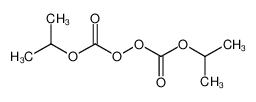



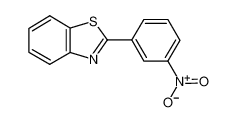

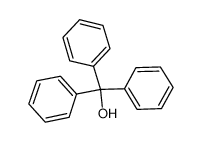
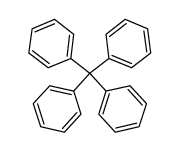









-
-

-
-
-
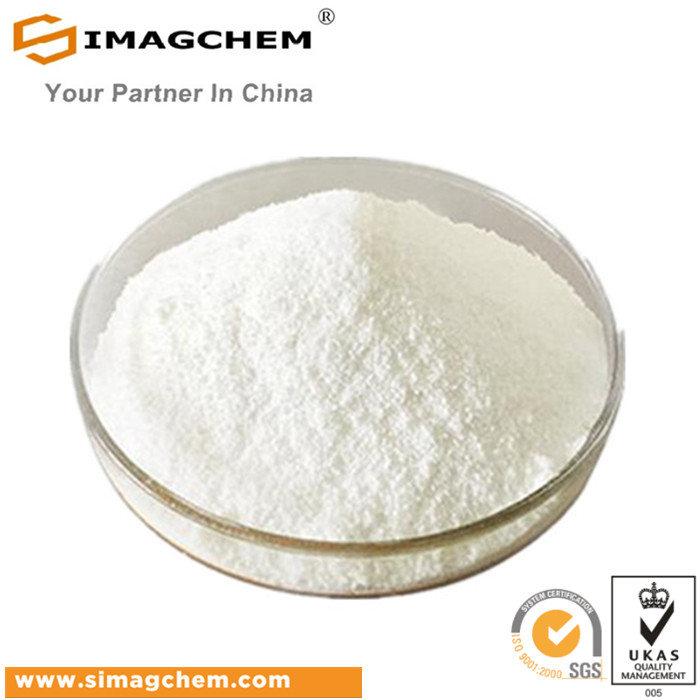
-
-
-

-
-
-

-
-
-

-
-
-

-
-
-

-
-
-

-
More Suppliers>>Hangzhou J&H Chemical Co., Ltd.
CHINA
Purity: >97%
Lead Time: 7 Day(s)
Price: -
Xiamen Zhixin Chemical Co., Ltd.
CHINA
Purity: 99%
Lead Time: 3 Day(s)
Price: -
Henan Coreychem Co.,Ltd
CHINA
Purity: 98%
Lead Time: 3 Day(s)
Price: -
Hangzhou DayangChem Co., Ltd
CHINA
Purity: 98%
Lead Time: 7 Day(s)
Price: -
Skyrun Industrial Co., Limited
CHINA
Purity: 99%
Lead Time: 7 Day(s)
Price: -
Shaanxi Hongkang Biotechnology Co., Ltd.
CHINA
Purity: 98%
Lead Time: 14 Day(s)
Price: -
Kunshan Shuangyou Daily Chemical Co., Ltd.
CHINA
Purity: 95%
Lead Time: 0 Day(s)
Price: -
Kunshan Dongchen Chemical Co., Ltd
CHINA
Purity: 95%
Lead Time: 14 Day(s)
Price: -